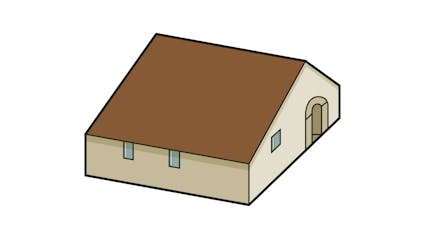693 – Wine Press
In German Swiss wine regions these presses were called "Trotte", "Torggel", "Driel" or "Prässi". Mainly grapes were pressed but also apples for fresh cider.


Monastic Wine
Judging by the gothic arched portals, this building could be the same vineyard mentioned in a wine transport document of 1482. It is literally recorded as the “Paradieser trott”. The main hall of lime-sandstone actually once belonged to the farm domain of the Schaffhausen monastery “Paradis”.
The press building was situated on the Rhyhalde, once part of the wine slopes east of the city of Schaffhausen. Between 1743 and 1750 it was completely rebuilt and enlarged. The sandstone door and window embrasures were transported to the Open-Air Museum, whilst the remainder of the building was built anew here in the condition of 1750.
Wooden Giant
The astonishing gigantic boom press inside comes from Fläsch in Grisons. It bears two dates: heart forms carved into the rotating spindle above the stone weight are surrounded by the date 1695. At the opposing end of the device one of the booms has some initials and the date 1695. This press weighs two and a half tonnes!
Large Format
In German Swiss wine regions these presses were called “Trotte”, “Torggel”, “Driel” or “Prässi”. Mainly grapes were pressed but also apples for fresh cider. Such gigantic presses with booms over ten metres long (33 feet) are documented in several regions for the 14th and 15th centuries. The massive boom presses functioned on the principle of the lever. They exerted a force of several dozen tonnes. Only when industrial presses with direct-acting metal screw spindles were introduced between 1850 and 1900 did the wooden giants become redundant after having served faithfully for centuries.
Ballenberg
Swiss Open-Air Museum
Museumsstrasse 100
CH-3858 Hofstetten bei Brienz
Opening hours
11 April to 27 October 2024
10 am to 5 pm daily